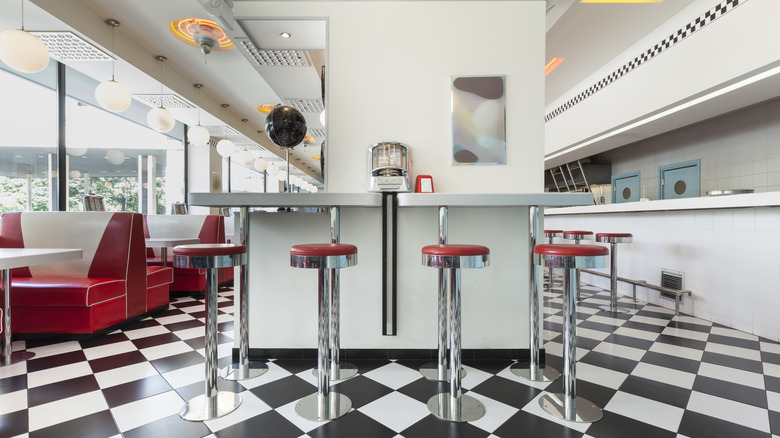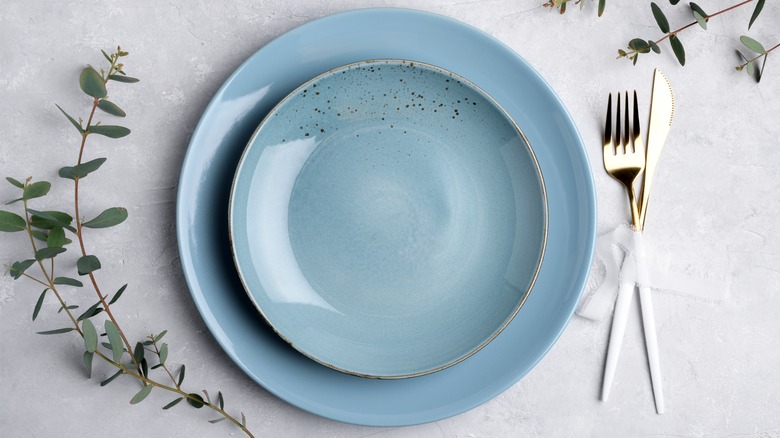How Did The Blue Plate Special Even Get Started?
Whether it's stereotypical greasy spoon diners staffed by brutish short-order cooks and cigarette-smoking waitresses or your local diner that's been there for a few decades now, American diners have something special about them. Maybe it's the home-cooked food or the appeal of eating somewhere with its own unique history. Perhaps it's the language of fantastic descriptions, metaphors, and imagery that's used to describe the food they serve.
Mental Floss gives us an example of this so-called "diner lingo," telling us that such whimsical phrases like "Burn one," "Mississippi Mud," and "Skid grease" refer to common everyday foods like hamburgers, mustard, and butter. These colorful turns of phrase, CT Insider reports, were born from creative nicknames and mnemonic suggestions to help waitresses remember orders during a busy day. For example, you could remember an order for a hot dog and French fries by calling it an order of "a Coney Island and Frog sticks." Over time, these rhymes and phrases soon became commonplace in the American diner scene.
But while diner lingo may not be as common now as it was in the 1950s, you probably still see a certain "special item" on the menu of your neighborhood diner: The Blue Plate Special. Just what exactly is this so-called "special" and what makes it so unique?
The Blue Plate Special has roots in the railroad
The Blue Plate Special was, and currently still is, a term for a lunch or dinner special, usually consisting of a hearty selection of foods like poultry and vegetables for a cheap price. The origins of Blue Plate Special have roots in the working class and laborers of the late 1800s, having gained popularity for being not only affordable but filling as well.
According to CulinaryLore, the Blue Plate Special can be traced back to Fred Harvey, who owned a chain of "Harvey House" diners and restaurants in 1892. Harvey's restaurants were located along the Atchison, Topeka, and Santa Fe Railroad line, meaning that railroad workers and passengers alike were frequent customers. Harvey House restaurants were known for serving meals on cheap disposable blue plates with divided sections, much like a cafeteria tray. Although CulinaryLore does admit that the term "Blue Plate Special" can refer to "Blue Willow" china plates that were popular at the time, it's believed that Harvey's recognizable blue plates played a significant role in creating the diner term.
As Mental Floss explains, Fred Harvey's restaurants were renowned at the time for their cleanliness and quality, which helped to build the idea that a "blue plate special" was something that would be both delicious and cheap. During the Great Depression, the Blue Plate Special became a common sight in many diners, as patrons searched for ways to enjoy a hot meal with what little money they had.

